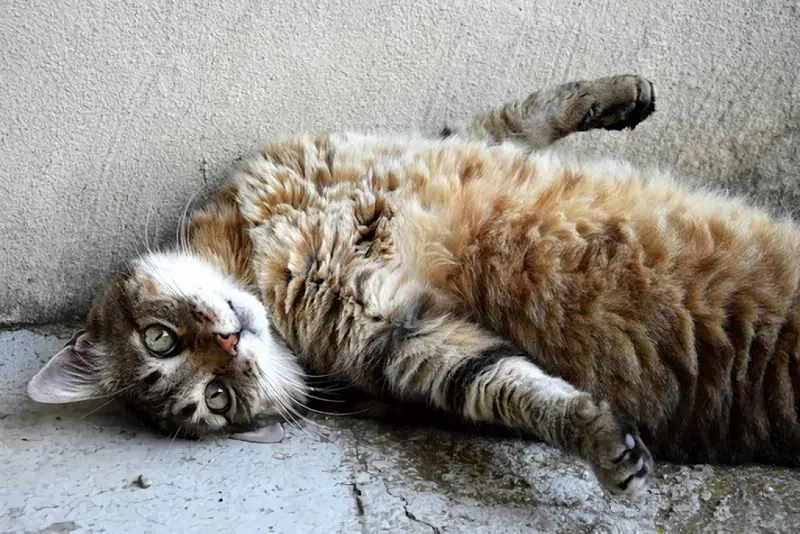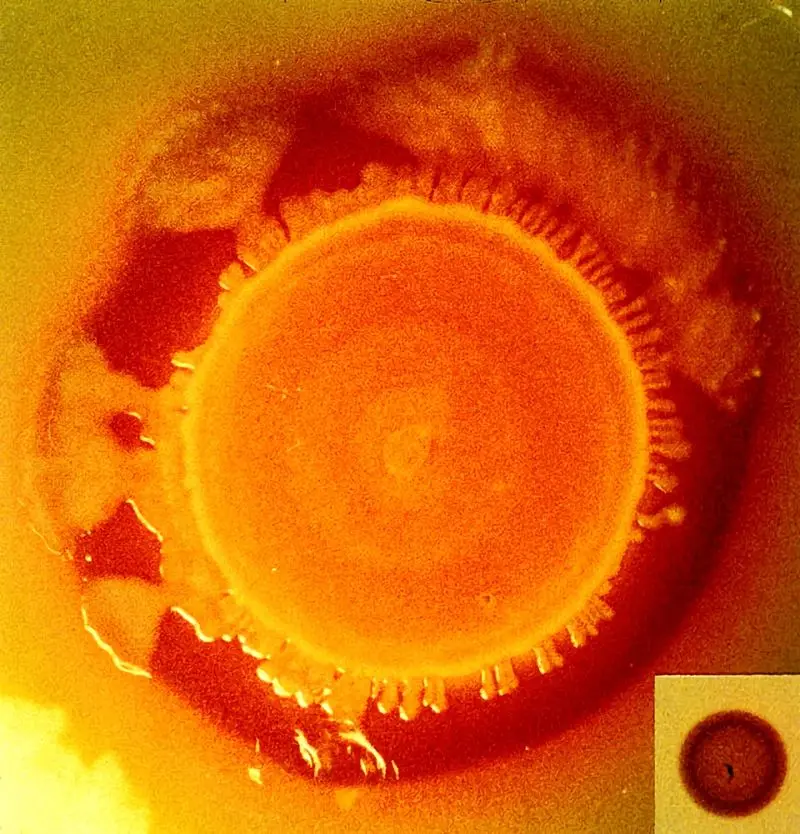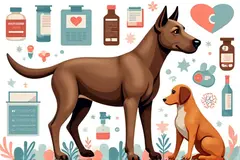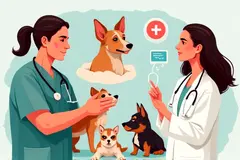 Red blood cell.... ↪ Read more
Red blood cell.... ↪ Read more Veterinary Drug Handbook (VDH) is the reference veterinarians turn to when they want an independent source of information on the drugs that are used in veterinary medicine today.
-
 Is veterinary Liniment Gel safe for humans?
Is veterinary Liniment Gel safe for humans? -
 Giving Your Cat A Pill
Giving Your Cat A Pill -
 Dog Aggression
Dog Aggression -
 Dogs May Help Boost Infant Health
Dogs May Help Boost Infant Health -
 Animal-Assisted Therapy, Veterinary Social Work, & Social Work With People & Pets in Crisis
Animal-Assisted Therapy, Veterinary Social Work, & Social Work With People & Pets in Crisis -
 On-demand veterinary service gives advice on poorly pets
On-demand veterinary service gives advice on poorly pets -
 Should we stop throwing sticks for dogs?
Should we stop throwing sticks for dogs? -
 Can breathing in cat hair be harmful?
Can breathing in cat hair be harmful? -
 What does PU/PD mean in veterinary medicine?
What does PU/PD mean in veterinary medicine? -
 Bill calls for ban on sales of dogs, cats in Maine pet stores
Bill calls for ban on sales of dogs, cats in Maine pet stores -
 Common Meanings Of Cat Behavior
Common Meanings Of Cat Behavior -
 What does DVM stand for in veterinary?
What does DVM stand for in veterinary? -
 Curing Bad Cat Breath
Curing Bad Cat Breath -
 New Tracking Tool for Pathogen Investigators
New Tracking Tool for Pathogen Investigators -
Can binturongs be kept as pets?
-
 How long do instruments stay sterile after autoclaving veterinary?
How long do instruments stay sterile after autoclaving veterinary?
Erythrocyte Abrev RBC
Erythema multiforme Abrev EM
 An acute, self-limiting eruption of the skin and mucous membranes characterized by distinctive gross lesions and a diagnostic sequence of pathologic changes.... ↪ Read more
An acute, self-limiting eruption of the skin and mucous membranes characterized by distinctive gross lesions and a diagnostic sequence of pathologic changes.... ↪ Read more Equitainer
 A container originally designed for shipping horse semen; also used to maintain temperature control of semen from other species.... ↪ Read more
A container originally designed for shipping horse semen; also used to maintain temperature control of semen from other species.... ↪ Read more Epitope
Epithelial cells
 Cells that line the surface of an organ such as the epithelial cells lining the vagina.... ↪ Read more
Cells that line the surface of an organ such as the epithelial cells lining the vagina.... ↪ Read more Epistaxis
Epinephrine
 A vasopressor drug which via alpha stimulation increases systemic vascular resistance and improves coronary and brain blood flow.... ↪ Read more
A vasopressor drug which via alpha stimulation increases systemic vascular resistance and improves coronary and brain blood flow.... ↪ Read more Epilate
Epidural anesthesia
 Injection of an anesthetic agent into the space outside the dura mater of the spinal cord.... ↪ Read more
Injection of an anesthetic agent into the space outside the dura mater of the spinal cord.... ↪ Read more Epididymitis
Epididymis
 A structure that is connected to the testicles and stores sperm prior to ejaculation. A convoluted, tubular structure connected to the testes that stores sperm.... ↪ Read more
A structure that is connected to the testicles and stores sperm prior to ejaculation. A convoluted, tubular structure connected to the testes that stores sperm.... ↪ Read more Epidermis
 The outer most layer of skin which is made of sequential layers called the stratum corneum, stratum granulosa, stratum spinosum, stratum basalie, and basal lamina. The top layer of skin above the dermis.... ↪ Read more
The outer most layer of skin which is made of sequential layers called the stratum corneum, stratum granulosa, stratum spinosum, stratum basalie, and basal lamina. The top layer of skin above the dermis.... ↪ Read more Popular Diagnoses
Packed cell volume (PCV, hematocrit) Reflex ovulator Mucolytic Microfilaricide Bronchodilator Hematocrit Glucocorticoid Monoamine oxidase inhibitor (MAOI) ↪ All veterinary diagnoseOther Diagnoses
Mitochondria mL Modified live vaccine Monovalent vaccine Monoamine oxidase inhibitor (MAOI) Mucolytic Mucopolysaccharide MucosaPopular Veterinary Clinics
VCA Welborn Animal Hospital, 7860 Washington Avenue Kansas City, KS 66112 USA MedVet Columbus, 300 East Wilson Bridge Road, Worthington, OH Rutland Veterinary Clinic & Surgical Center, 90 East Pittsford Road, Rutland, VT VCA Paradise Valley Emergency Animal Hospital, 6969 East Shea Boulevard Suite 150 Scottsdale, AZ 85254 USA Connecticut Veterinary Center & Pet ER, 470 Oakwood Ave West Hartford, CT 06110 USA Norway Veterinary Hospital, 10 Main St P.O. Box 273 Norway, ME 04268 USA Craig Road Animal Hospital, 5051 West Craig Road, Las Vegas, NV Abri Veterinary Hospital Inc, 1449 Trademart Boulevard Winston-Salem, NC 27127 USA ↪ All veterinary clinicsOther Veterinary Clinics
Central Park Veterinary Clinic, 252 Route 108, Somersworth, NH Cheshire Animal Hospital, 505 Winchester Street Keene, NH 03431 USA Companion Pet Care, 22 Maple Street Littleton, NH 03561 USA Countryside Animal Hospital, 327 Derry Rd Hudson, NH 03051 USA DERRY ANIMAL HOSPITAL, 28 TSIENNETO ROAD DERRY, NH 03038 USA Handle With Care Vet Hospital, 33 Crystal Ave., Derry, NH Hudson Animal Hospital, 208 Central Street Hudson, NH 03051 USA VCA Russell Animal Hospital, 286B Pleasant Street, Concord, NHPopular Drugs
DOXYLAMINE SUCCINATE Doses - PENICILLIN V POTASSIUM Doses - METHYLPREDNISOLONE, METHYLPREDNISOLONE ACETATE, METHYLPREDNISOLONE SODIUM SUCCINATE ACEPROMAZINE MALEATE Doses - PREDNISOLONE, PREDNISOLONE SODIUM SUCCINATE, PREDNISOLONE ACETATE, PREDNISONE Doses - FURAZOLIDONE Doses - FERROUS SULFATE Doses - LEVAMISOLE ↪ All veterinary drugOther Drugs
PrednisTab® (Prednisolone, USP) PrednisTab® (Prednisolone, USP) PrednisTab® (Prednisolone, USP) Improvest® (Gonadotropin Releasing Factor Analog-Diphtheria Toxoid Conjugate, 0.2 mg/mL) Magna PrednisTab® (Prednisolone, USP) Isoflurane, USP Inhalation Anesthetic For Use in Horses and Dogs EndosorbPopular Terms
Subalbinotic Steatis Uteroverdin Paradoxical CSF acidosis Figure of 8 suture pattern Nerve root signature Ovariohysterectomy Abrev OVH Signalment ↪ All veterinary termOther Terms
Aerogun Aerophobia Afebrile Agonistic Agoraphobia Agostadero Agranulocyte Agrarianveterinary-help.com
© 2011-2025 Veterinary Clinics, Diagnoses, Terms and Drug Handbook Online





